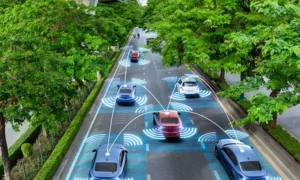Responding to The National Institute of Economic and Social Research forecast that the Retail Prices Index (RPI), which is used to set rail fares and student loans repayments, will hit 17.7 per cent, Paul Tuohy from Campaign for Better Transport said:
“We need people to use the trains to help cut congestion and air pollution and stimulate economic activity in our towns and cities, but with a double-digit fare rise on the cards for next year, we are in very real danger of pricing people off the rails. The Government has helped out drivers with the cost-of-living crisis, now it’s time to help rail passengers with a fare freeze for 2023.”
Campaign for Better Transport said there is mounting evidence to suggest that a rise in rail fares leads to a reduction in passenger numbers. A 2003 report by ITS Leeds found that for suburban rail, a fare increase of five per cent leads to a three per cent reduction in patronage, and for inter-urban rail a fare increase of five per cent leads to a 4.5 per cent reduction in patronage. This calculation was done at a time when commuters were a very large proportion of rail travellers and were a fairly captive market. Since widespread working from home has become established during the pandemic, commuter journeys are now much more discretionary, on a par with leisure travel. Hence fare increases will lead to an even larger reduction in patronage.
A recent Institute of Economic Affairs report stated that “Even if rail companies hike fares, they may still receive less revenue than pre-pandemic, as a high proportion of what were compulsory commuter trips with a low elasticity of demand are likely to become discretionary with a higher elasticity of demand. For example, an elasticity of −0.5 would still allow the railway to generate more total revenue from a ticket price rise, but elasticities of −1 and higher lead to an absolute loss of revenue.”
Transport is now the biggest source of greenhouse gas (GHG) emissions, accounting for 27% of all domestic GHG, but different vehicles make different contributions to this. Collectively, cars are the main contributor of GHG (55 per cent), followed by lorries and vans (32 per cent), while buses, coaches and rail collectively account for just four per cent. (Department for Transport, 2019, Table ENV0201)





















